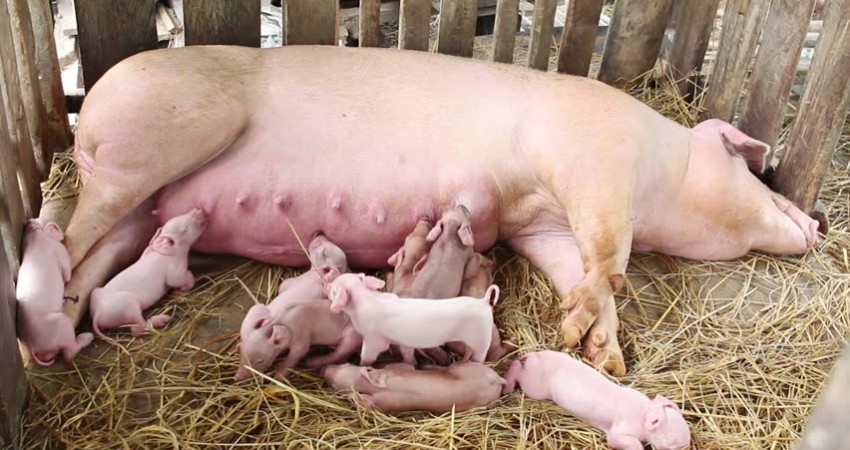

Colostrum has an important function providing the piglet with a maternally derived, passive immunity after birth.
It is also the main source of nutrients and growth-promoting peptides for intestinal tract development in the new-born, contributing greatly to passive immunity. Compared to regular milk, sow colostrum contains high concentrations of nutrients(protein and fat) and immunoglobulins (IgG but also IgA, IgM), immune cells, and various antimicrobial substances such as lactoferrin. Therefore, colostrum plays an essential role in piglet survival and growth and is the earliest contribution to reducing neonatal diarrhoea.
Since proper colostrum intake is a determining factor for piglet development, sows produce less colostrum than could be consumed by the litter. Therefore, although colostrum is freely available during the first hours after birth, in modern sows it might be limited due to the high numbers of piglets born (estimated to vary between 2.5 and 5.0 kg over 24 h for a litter of 8–12 piglets). Then colostrum production and colostrum intake is one of the most challenging aspects for high prolificacy breeds.
Nutritional aspects do not only determine the variability in sow colostrum production. The main aspects, which explain this variability in colostrum yield, are
Sow parity number: young sows up to 3-4 farrowings produce more colostrum than older sows
Mammary gland development: similar to milk as the higher the number of milk producing cells in the mammary tissue, the higher the potential colostrum yield.
The endocrine status: the individual variations in the progesterone decrease and prolactin peak. In this case, a delay in the exchange of those hormones before farrowing may dramatically reduce the yield of colostrum. Moreover, the relative concentration of prolactin and progesterone around farrowing may also affect colostrum yield.
As litter sizes increase, the number of low-weight and low-vitality piglets, which have a lower colostrum intake, also increases.
Although it has been reported that via nutritional strategies and feeding management, colostrum quality may be altered and modulated, any positive feeding strategies to maximise colostrum production is more complex, and should involve mammary gland development and control colostrum synthesis in late gestation. Then, the excess of feed during gestation may have a negative impact on the sow’s mammogenesis due to excessive fat deposition.
On the other hand, there is a positive relationship between circulating plasma urea and creatinine in late gestation and colostrum yield. Plasma urea is the final product of protein oxidation and creatinine indicates protein mobilisation from muscles. Therefore, some lean tissue mobilisation during late gestation may be associated with a higher colostrum yield.
 Contact Jaguza Support
Contact Jaguza Support